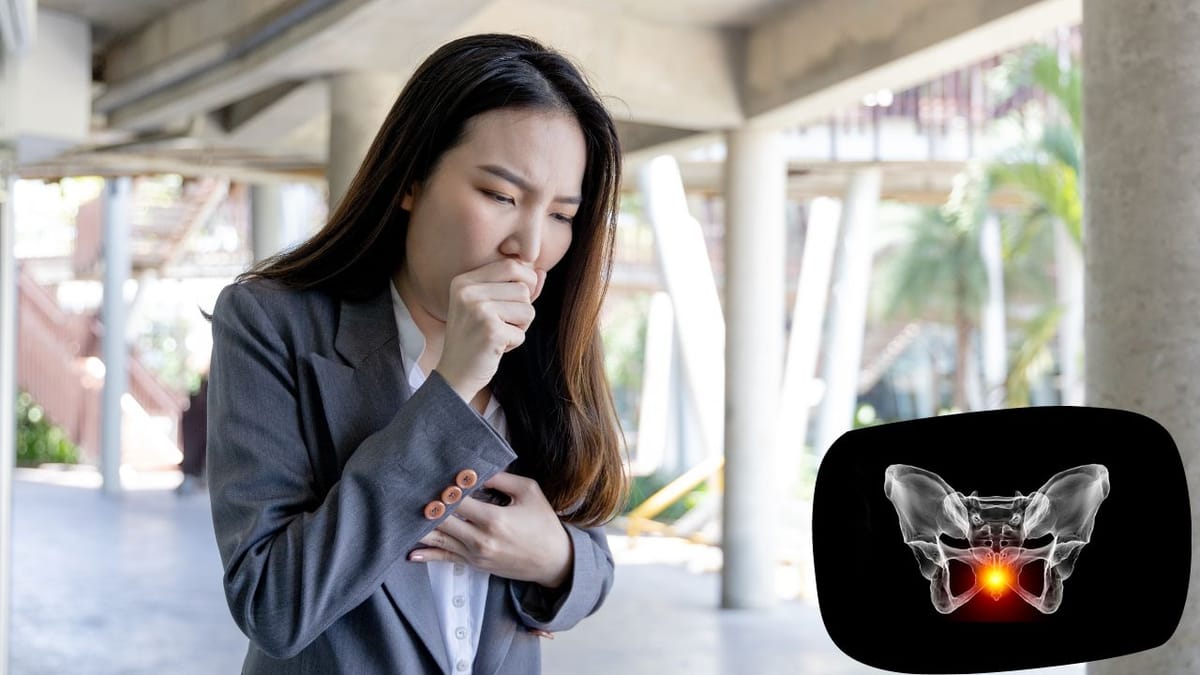Coccyx Pain When Sneezing
In the dance of sneezes and unexpected discomfort, this article unravels the mystery of why your coccyx might decide to chime in during a simple 'achoo.'

Coccyx pain, also known as coccydynia, can be a discomforting and sometimes perplexing condition. Experiencing coccyx pain when sneezing, the added strain can make everyday activities challenging.
In this comprehensive article, we'll delve into the causes of coccyx pain, why sneezing may exacerbate it, and most importantly, explore effective strategies for managing and alleviating this specific discomfort.
Understanding Coccyx Pain
The coccyx, or tailbone, is the small, triangular bone at the base of the spine. Coccyx pain can result from various causes, including trauma, prolonged sitting, or inflammation of the surrounding tissues. Sneezing, a seemingly innocuous activity, can intensify this pain due to the sudden and forceful contraction of muscles in the pelvic region.
Causes of Coccyx Pain When Sneezing
- Muscle Contraction: Sneezing involves a rapid contraction of muscles, including those connected to the coccyx. Individuals with pre-existing coccydynia may experience heightened pain during this process.
- Pressure on Coccyx: The force generated during a sneeze can momentarily increase pressure on the coccyx, aggravating any existing inflammation or injury.
- Spinal Misalignment: Coccyx pain can also be linked to spinal misalignment, which may be exacerbated during the sudden jolt caused by a sneeze.
Managing Coccyx Pain During Sneezing
- Optimal Posture: Maintaining good posture, both while sitting and standing, can alleviate stress on the coccyx.
- Cushioning: Using a coccyx cushion or pillow, especially when sitting for extended periods, can provide relief by reducing direct pressure on the tailbone.
- Pelvic Floor Exercises: Strengthening the pelvic floor muscles through targeted exercises can enhance support to the coccyx and minimize discomfort.
- Hot and Cold Therapy: Applying heat or cold packs to the affected area may help reduce inflammation and soothe pain.
- Medical Consultation: If the pain persists, consulting a healthcare professional is crucial to rule out underlying issues and explore advanced treatment options, such as physical therapy or medications.
Preventing Coccyx Pain
In addition to managing pain, adopting preventive measures is essential. This includes practicing good posture, incorporating regular breaks during prolonged sitting, and maintaining a healthy lifestyle with exercises that promote overall spine health.
Solutions and Prevention
Managing coccyx pain involves a combination of self-care measures and, in some cases, medical interventions. For mild coccyx pain, individuals can try strategies such as using a cushion with a coccyx cutout to relieve pressure while sitting, practicing good posture, and avoiding prolonged periods of sitting.
Applying ice or heat to the affected area, over-the-counter pain relievers and gentle stretches may also provide relief. If the pain persists or is more severe, seeking guidance from a healthcare professional is advisable.
They can conduct a thorough evaluation to identify the underlying cause of the pain and recommend tailored treatments such as physical therapy, pain medications, or injections for inflammation. In rare cases where there's structural damage, surgical interventions may be considered.
Ultimately, the approach to getting rid of coccyx pain depends on the severity of the discomfort and the specific factors contributing to it, highlighting the importance of personalized care and professional advice.

- Proper Cushioning: Investing in a coccyx cushion can provide additional support and alleviate pressure during sitting and, consequently, when sneezing.
- Postural Awareness: Maintaining good posture, especially when seated, helps distribute weight evenly and reduces stress on the coccyx.
- Tailbone Stretches: Gentle stretches that focus on the pelvic region can enhance flexibility and reduce tension in the coccyx area.
- Medical Evaluation: If pain persists, consult a healthcare professional for a thorough evaluation to rule out underlying issues and explore tailored treatment options.
- Warm Compresses: Applying a warm compress to the coccyx area can help relax muscles and alleviate discomfort.
FAQs
Q: Why does my coccyx hurt when I sneeze?
A: This common question addresses the specific concern of experiencing pain in the tailbone area during sneezing. Explaining the physiological reasons behind this phenomenon helps readers understand the connection between sneezing and coccyx discomfort.
Q: Are there specific conditions that make coccyx pain worse during sneezing?
A: Delving into the various underlying conditions, such as coccydynia or spinal misalignment, that can contribute to heightened pain during sneezing provides readers with insights into potential causes and encourages them to consider seeking professional advice.
Q: Can poor posture exacerbate coccyx pain when sneezing?
A: Exploring the relationship between posture and coccyx pain helps readers recognize the importance of maintaining good posture to alleviate stress on the tailbone. This question opens the door for discussions on preventive measures.
Q: What exercises can help manage coccyx pain during activities like sneezing?
A: Addressing the proactive side of managing coccyx pain, this question guides readers toward potential solutions, such as pelvic floor exercises, that can strengthen supporting muscles and reduce discomfort during sneezing or similar activities.
Q: When should I seek medical attention for coccyx pain when sneezing?
A: This question emphasizes the importance of recognizing when coccyx pain might be indicative of a more serious issue. Offering guidance on when to consult a healthcare professional encourages readers to prioritize their well-being and seek timely intervention if necessary.
Key Takeaways!
Coccyx pain when sneezing can be disruptive, but with a combination of self-care strategies and professional guidance, individuals can effectively manage and reduce discomfort. Prioritizing spinal health, adopting preventive measures, and seeking timely medical advice contribute to a holistic approach to addressing coccyx pain and improving overall well-being.
